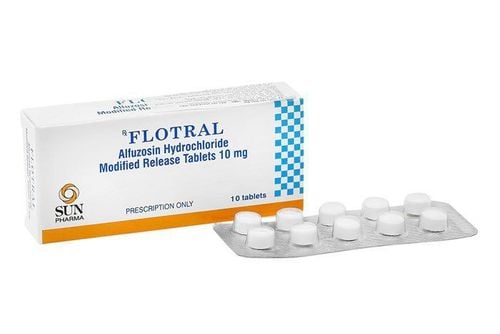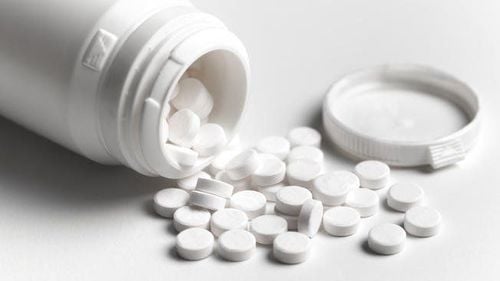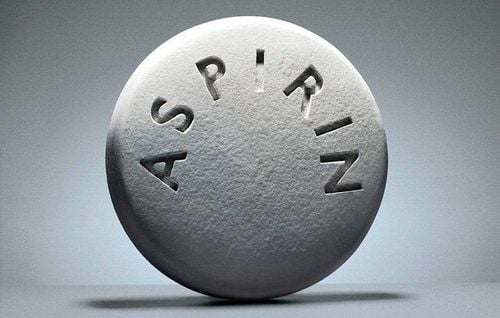This is an automatically translated article.
Fudalis is used by doctor's prescription to effectively treat the symptoms of degenerative joint disease or osteoarthritis. Fudalis is especially effective in reducing pain quickly in cases of knee or hip osteoarthritis. To use Fudalis safely and limit the risk of side effects, you need to strictly follow the instructions for use of the drug prescribed by your doctor.
1. What is Fudalis?
Fudalis belongs to the group of analgesic - antipyretic - anti-inflammatory drugs, researched, developed and manufactured by Phuong Dong Pharmaceutical Joint Stock Company - Vietnam. Currently, Fudalis is mainly used to treat pain caused by arthritis or osteoarthritis.
The main active ingredient in Fudalis is Diacerein 50mg. In addition, the drug also contains other auxiliary excipients added by the manufacturer to increase the effect of the main active ingredient.
Fudalis medicine is made in the form of capsules and packed in boxes of 3, 6, 10, 25 or 50 blisters x 10 tablets. To use the drug effectively and prevent the risk of experiencing side effects, patients need to follow all the instructions of the doctor.
2. What are the effects of Fudalis?
2.1. Uses of active ingredients Diacerein Diacerein is known to be a substance that has a rapid analgesic effect thanks to its ability to inhibit the production and activity of Interleukin-1. In addition, the active ingredient Diacerein also helps to stimulate the release of transforming growth factor-a (TGF-a) and some components in the extracellular matrix such as Aggrecan, Proteoglycan, type II colloid and hyaluronic acid.
Besides, Diacerein also inhibits phagocytosis as well as the migration of macrophages. Through a number of studies on animal models of osteoarthritis, it has been shown that Diacerein significantly reduces cartilage degeneration after a period of treatment. Therefore, Diacerein is highly appreciated by experts for its ability to reduce osteoarthritis.
2.2. Indications and contraindications to the use of Fudalis medicine Fudalis drug is used according to a doctor's prescription to effectively treat symptoms originating from the following health conditions:
Osteoarthritis of the knee. Hip osteoarthritis. Osteoarthritis. However, should not arbitrarily use Fudalis for the following patients without a doctor's prescription:
Patients with a history of hypersensitivity or allergy to Diacerein or Anthraquinone derivatives. Fudalis is contraindicated for pregnant women or nursing mothers. Do not give Fudalis to children under 15 years of age. Fudalis is contraindicated in patients with a history of or existing liver disease.
3. Instructions for use and recommended doses of Fudalis
Fudalis medicine is in the form of capsules for oral use. You should take the medicine with a glass of water about 250ml, avoid taking it with other drinks such as carbonated drinks, stimulants, alcohol or soft drinks. Fudalis can be taken after you have had a full meal or as specifically directed by your doctor.
Dosage of Fudalis drug to treat the symptoms of osteoarthritis / osteoarthritis is 2 tablets / day. You can divide the dose into 2 times / day and take it after meals. For patients with renal impairment with creatinine clearance less than 30 ml/min, a half dose reduction may be considered.
Before treatment with Fudalis, you need to carefully read the instructions for use of the drug listed on the product packaging or consult your doctor. Absolutely do not arbitrarily use the drug or adjust the dose without the approval of the doctor.
In case you miss a dose of Fudalis, you need to take the dose as soon as possible. However, avoid taking too close to the time of your next dose or taking a double dose at the same time.
If you overdose on Fudalis and experience adverse symptoms such as diarrhea, you need to stop treatment immediately and notify your doctor to take measures. Emergency treatment of Fudalis overdose usually includes measures to restore water-electrolyte balance, which is especially important in patients with persistent diarrhea.
4. Possible side effects when taking Fudalis
During the treatment of osteoarthritis or osteoarthritis with Fudalis, patients may experience some unwanted side effects such as:
Diarrhea (7%), usually occurring in the first days when the patient has just started taking the drug. However, most cases of diarrhea will gradually disappear after a period of treatment. Diarrhea with epigastric pain may occur in about 3-5% of patients. Nausea or vomiting occurs in 1% of patients. Urine is dark yellow. Hepatobiliary system disorders such as acute liver injury, elevated serum liver enzymes or hepatitis. Most of these conditions will occur within the first months of treatment with Fudalis. Ideally, patients should be closely monitored for symptoms and warning signs of liver damage throughout the course of the drug. To prevent the risk of unwanted side effects, you need to apply the correct dose and duration of treatment with Fudalis as recommended by your doctor. If you experience any unusual reactions after using Fudalis, you need to notify your medical officer immediately so that they can be corrected as soon as possible. Some of the symptoms associated with Diacerein can be more severe and more difficult to treat if detected late.
5. Important notes during treatment with Fudalis
To ensure safety and avoid adverse side effects when taking Fudalis, you should note the following general recommendations:
Risk of diarrhea may occur when taking Fudalis regularly, from That increases the likelihood of dehydration and hypokalemia. If symptoms of diarrhea and hypokalemia occur, you need to stop taking the drug and talk to your doctor about other more suitable alternative treatments. Renal impairment may alter the pharmacokinetics of the active ingredient diacerein, so dose reduction is required in subjects with creatinine clearance < 30 ml/min. Fudalis should be taken with food as this can increase absorption by up to 25%. Conversely, severe malnutrition may reduce the bioavailability of the active ingredient Diacerein in the drug. Taking Fudalis on an empty stomach may increase the risk of gastrointestinal side effects. Avoid taking Fudalis at the same time with other laxatives or drugs that increase bowel movements. Fudalis should not be used in children under 15 years of age because there are no specific clinical studies proving its effectiveness in this age group. Fudalis does not affect the patient's ability to drive or use machines. Avoid taking Fudalis at the same time with preparations containing magnesium hydroxide or aluminum hydroxide because this combination may reduce the bioavailability of the active ingredient Diacerein. Avoid concomitant use of Fudalis with antibiotics or drugs that can affect the intestinal microflora because this increases the risk of intestinal problems for the patient. Fudalis should be stored in a cool, dry place, away from direct sunlight or high humidity. Always check the expiry date of Fudalis medicine carefully before using it to avoid taking the expired medicine. When the tablet shows signs of mold, deformation or color change, you need to stop using and discard the medicine exactly as recommended by your doctor.













